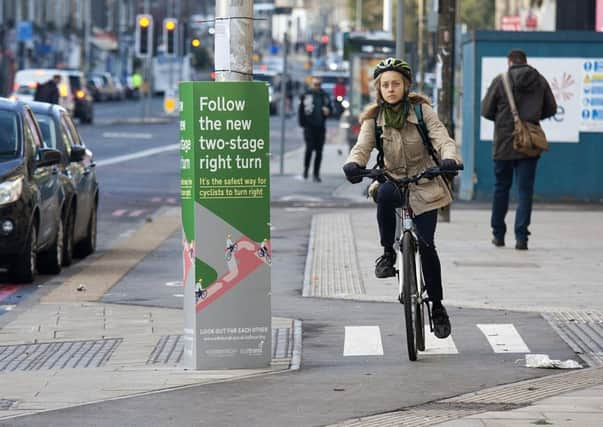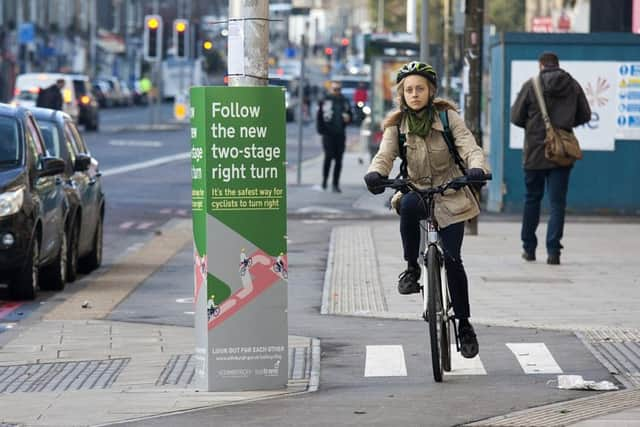Helen Martin: Cyclists at risk on our booby-trapped roads


Trams have resulted in one claim a month from cyclists, moped riders and motorcyclists. Over the last seven years, around 200 cyclists have been injured, and one killed, a record which has hiked the council’s tram insurance premium and raised the excess payment from £10,000 to £100,000.
The irony is that during the period in which the council pushed ahead with the tram system (which certainly divided opinion among city residents) and let the roads go to rack and ruin because they didn’t allocate enough funding to keep them safe and in good repair, councillors and officials also devoted themselves to encouraging more and more people to take to two wheels.
Advertisement
Hide AdAdvertisement
Hide AdEven before tramlines existed, and back in the day when our roads and streets were not full of craters and cracks, Edinburgh was not a city centre made for cycling. There were bumpy cobbles, numerous hills and bends, narrow streets having been made even narrower by pavement extensions, and a high volume of traffic, including everything from cars and white vans to delivery lorries and buses. Anyone had to be brave and recognise the risks when they chose to cycle through that lot.


Adding designated cycle lanes to the mix was sold as a move to make it safer for bikers. Arguably, that made things worse by narrowing down the space on our streets even more. Cycle lanes outside the city centre? That’s certainly a good idea if riders are happy to bypass town, but not much use for central commuting.
Of course, we know the council – and residents – face problems including congestion, impeded traffic flow and pollution. Increasing cycling as a means of transport is an obvious, but long-term answer.
With trams and potholes making it a more dangerous method of getting from A to B, the council jumped in too quickly in urging folk to take to the saddle.


Advertisement
Hide AdAdvertisement
Hide AdAnd they were too soft and blasé to insist city cyclists observed laws and “rules” to help make roads safer for them, as well as other users.
Where cycle lanes exist, that’s where cyclists should be. Trendy, black cycling gear doesn’t make a cyclist stand out at dawn or dusk, let alone dark nights or in bad weather. By law, cyclists should have lights for dull days or nights, making them more visible. If they don’t, they deserve a fine. They shouldn’t undertake – unless that’s the route their cycling lane takes them – nor should they surround drivers on both left and right, leaving no room for manoeuvre. Randomly riding about like a black pin ball puts both them, and others, at risk. If they do follow all the rules, it would be fair to blame a vehicle driver for any incident.
Let’s imagine for a moment that the council re-widened roads to create more, clearly indicated and protected cycle lanes; totally solved the problems tramlines pose cyclists, or kept cyclists away from tram routes; repaired potholes using quality, lasting methods rather than fills which break up again within weeks; and worked to ensure cyclists stick to the rules.
Putting safety first, before flooding our booby-trapped streets with vulnerable cyclists, would have been the correct way to go – would have saved cyclists injury – and might even have kept insurance bills in check.
Who pays garden tax for communal back greens? JUST over a couple of quid a month for garden waste pick-up? That’s fair enough. But in a city of tenements with communal back greens, who pays?
